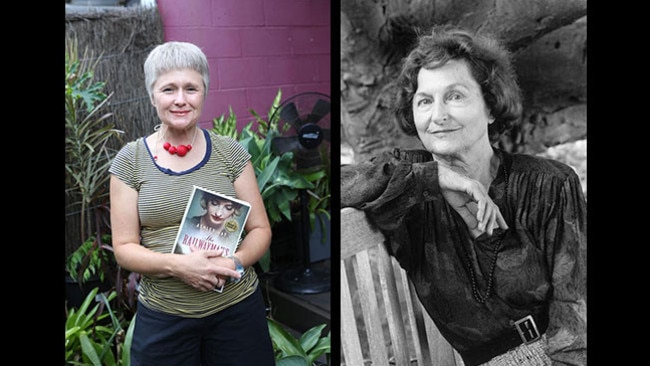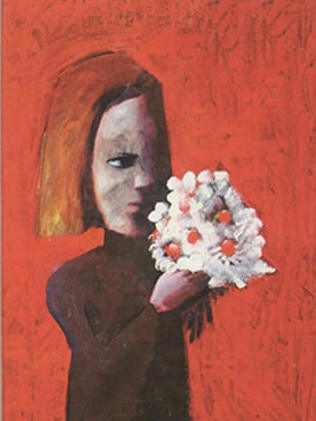Jessica Anderson’s Tirra Lirra brings writer closer to the source
One writer’s acquaintance with a classic Australian novel is moulded by time and place — and a remarkable coincidence.

In 1988, the NSW Board of Studies included Jessica Anderson’s Tirra Lirra by the River in its Year 12 English curriculum. Anderson had published the book a decade earlier and it won the Miles Franklin.
The novel tells the story of Nora Porteous returning to her childhood home in Brisbane and spinning, for the first time, the globe of memory populated by her life’s events. She considers a marriage, an abortion, a suicide attempt. She considers art and love and friends as she lies, ailing, in the house where she grew up.
At 17, in the classrooms of Bulli High School on the NSW south coast, I obediently memorised its quotes and analysed its imagery. I learned the extract from the Tennyson poem that gave the novel its title (“From the bank and from the river / He flashed into the crystal mirror. / ‘Tirra lirra,’ by the river / Sang Sir Lancelot”).
I practised essays to be performed as an exam. But as for the book itself, I was utterly certain I loathed it. I didn’t get it. I was sure it had nothing interesting or revelatory to say to me, and I was callow enough (as my English teacher might have said) to think that made the book a waste of time.
I must have known, somehow, that I was wrong, because the book lodged more firmly in my imagination than just about anything else I had to read that year: Maxine Hong Kingston’s Woman Warrior, for example, Thea Astley’s An Item from the Late News, and other volumes that have disappeared completely from my mind. When I moved to Brisbane, 20 years after finishing high school, Anderson’s novel demanded a new round of attention.
It started when I remembered her description of a mango tree — ‘‘the old sort, with fibrous fruit’’ — as I found myself in a landscape full of mango trees. There was a huge one in our yard, others in the yards all around, and a massive twinned one — even more vast — in the park beyond the back fence of the house across the road.

I remembered her description of walking a half-mile to the river — ‘‘broad, brown and strong’’ — as I walked my own half-mile to the river most mornings, trying to understand a palette so distinct from Sydney’s ultramarine harbour and sea.
I remembered the elegant way Anderson described those particular Queenslander houses: ‘‘a heavy wooden box stuck twelve feet in the air on posts’’ and ‘‘fourteen planks spanning the air’’ to bridge the space between the ground and the front door.
The house across from our new place was in the middle of undergoing that popular Queensland renovation — eased off its posts and hoisted higher again — to close in the space underneath the house and instantly double its living space. For a southerner, used to houses that stayed precisely where they were put, it was extraordinary to observe.
We’d rented a big white house on a corner block in Yeronga, in Brisbane’s south, attracted by that vast park abutting those houses opposite and by the aquamarine shimmer of the council pool tucked among its trees. Breezes trickled down from the ridge that held Ipswich Road, and from the side street that gave on to our driveway, from some angles you could glimpse the city’s spires and the Story Bridge.
But inside that white house, I was busy with other places: I was finishing a book set on Sydney Harbour; I was working on a book set on the NSW south coast. On some days, Dawes Point and Thirroul seemed more real to me than Brisbane, and in an attempt to redress that topographical balance, I decided at last to go back to Jessica Anderson and Tirra Lirra and to see what it showed me this time. I was 39, with a young son. And I found myself reading a different and wonderful book.
I marked passage after passage: lines of structural beauty; lines of heartbreaking humanity; lines that so perfectly caught an aspect of this place, or of people, or of the ways we try to go on through the world.
I cringed through the awfulness of Nora’s marriage and wondered at how cold-heartedly I’d judged that relationship when I was young. I felt her age. I felt her fear. I felt the very heat and light that she wrote of this place. And when I reached the last pages, I wept, wondering how on earth its final image — a horse’s plume, rising and falling; the dropped-down shape of a little girl’s first black dress — could have left me so unmoved the first time round.
I read on through other Anderson titles. The Commandant, a stunningly sharp historical novel set around the first penal settlement dug in at Moreton Bay. One of the Wattle Birds, which examines so precisely the act of writing and its work. In the short tales in Stories from the Warm Zone and Sydney Stories, I understood the chasm between those two precise geographies — Brisbane; Sydney — in a way I hadn’t before.
It was as if Anderson was helping me navigate this new city I had to live in, and when I began to work on the first stories I set in its landscape, I felt I was walking with her.
Only when my own Brisbane book was finished, years later, did I realise I had given one of my characters the same name as one of Nora’s friends in Tirra Lirra. Ida: an artist in mine; a dressmaker in hers. The funny ways imagination and memory work: it seemed like a lovely coincidence.
But there was another, lovelier one. We had left that rented house in Yeronga and moved down the hill to a smaller wooden box (closer to the sometimes bursting river and set up in the air on its own posts). And then a friend told me that the first house had in fact been right across the road from the house in which Jessica Anderson grew up — the house, perhaps, that gave some of the space and shape to the house in Tirra Lirra. The mango tree. The park. The half-mile to the river.
It was the house of Anderson’s childhood that I had watched being hoisted into the air and transformed. The “Honour Avenue” she wrote of was not, as people assumed, the name of a street in a nearby suburb; it was the name for the avenue of trees that ran through Yeronga Park, from the War Memorial to the local school, planted to commemorate World War I. And that school at the other end of the avenue — a school that Anderson had hated, as she touched on in Stories from the Warm Zone — would be my son’s school when he was old enough to go.
I really had entered Anderson’s world.
We’re years here now, my Brisbane book is almost in the world, and I’m re-reading The Commandant, astonished all over again by the acuity of the characters and the landscapes that Anderson writes. My son is in his fourth year at Yeronga, and I wish I could tell Jessica Anderson about the time he’s having of it. It’s a different place from the one she endured and despised: warm and nurturing and exciting.
Last year there was a trivia night to raise money for the school, and I took disproportionate pride in knowing the name of the Miles Franklin-winning author who had gone there. There she was: Jessica Anderson, remembered and invoked, as if this place now carried her forward and on, just as she had carried it forward and on in the stories she wrote for its setting.
I imagine her sometimes on her walks around here, as I keep on making my own. I imagine nodding to her, one hand raised in greeting, as we pass each other in the park. I hope she won’t entirely disappear.
Ashley Hay’s new novel is A Hundred Small Lessons.


